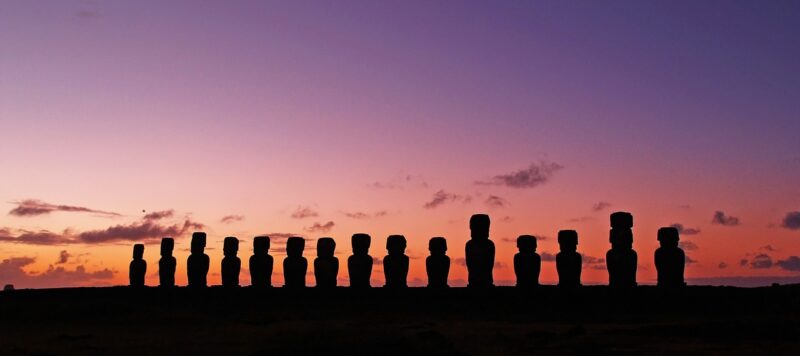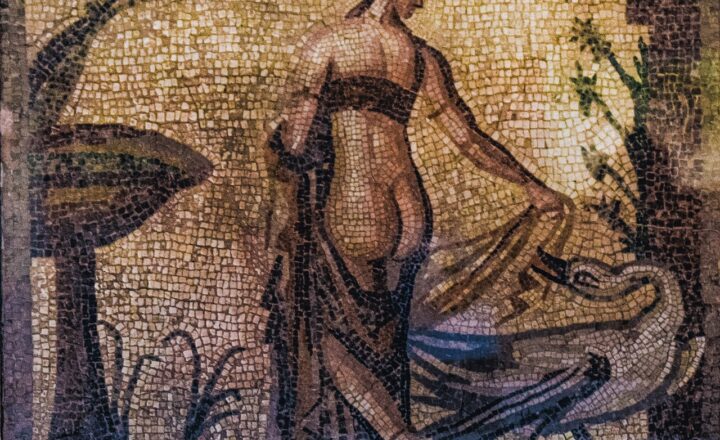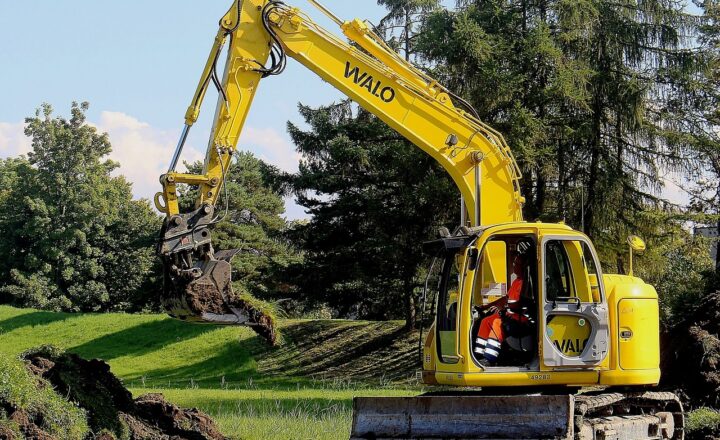The Enigmatic Easter Island Statues: What We Know and What Remains a Mystery
November 16, 2024

Easter Island, or Rapa Nui as it is known in the native tongue, is one of the most isolated inhabited islands in the world. Famous for its mysterious moai statues—gigantic stone figures constructed by the island’s earliest inhabitants—Easter Island continues to capture the imaginations of historians, archaeologists, and tourists alike.
These statues, numbering nearly 900, vary in size, style, and purpose. They stand as iconic symbols of Rapa Nui’s unique cultural legacy. This article delves into what we know about these enigmatic statues and the mysteries that still surround them.
1. The Moai Statues: A Brief Overview
The moai, which translates to “statue” in the Rapa Nui language, were primarily carved from volcanic tuff—a soft stone that is relatively easier to work with. Rapa Nui inhabitants began constructing these statues around the 10th century AD, reaching their peak production between 1400 and 1650 AD. What distinguishes the moai is their size, with some reaching up to 33 feet tall and weighing over 75 tons.
Most often, the moai were placed on stone platforms called “halai” which served as ceremonial sites and burial grounds for the high-ranking individuals they were meant to commemorate. Each moai exhibited unique features such as elongated heads, heavy brows, and prominent noses, representing the descendants of the island chief.
2. Theories Behind Their Construction
Various theories have emerged surrounding the construction and transportation of the moai statues, fueling robust academic debate. Here are some key theories:
- Technological Ingenuity: Many archaeologists believe that the Rapa Nui people used simple tools, ropes, and human labor to carve, transport, and erect the statues. Teams of people may have coordinated to rock the statues back and forth to move them from quarries to platforms.
- Symbol of Power: The construction of moai was a way to demonstrate social hierarchy and the power of chiefs. As the population grew, so too did the number of moai, indicating that chiefs competed to create ever larger and more numerous statues to assert their dominance and prestige.
- Divine Connection: Some experts suggest that the moai were intended to embody ancestral spirits, serving as guardians for the community. Hence, they may have served both a spiritual and social function, playing a role in rituals and ceremonies that helped to legitimize the authority of the chiefs.
As plausible as these theories may sound, the truth behind their construction remains partially shrouded in mystery.
3. The Transportation Enigma
How the Rapa Nui transported these massive statues across rugged terrain to their final locations is another intriguing mystery. Current research posits that the moai were either:
- Rolled on Logs: This popular theory suggests that by placing the moai on cylindrical wooden logs, teams pushed the statues along the forest floor. However, such a method would have required an immense amount of wood, leading to deforestation and ecological consequences.
- Walked Upright: Some claims assert that the moai were walked upright using ropes and coordinated movements, although practical evidence for this method remains unproven. Recent experiments have demonstrated that similar sized sculptures can be maneuvered this way, albeit with effort and teamwork.
Both theories provoke questions about the resources and ingenuity of the Rapa Nui society and how their methods led to the enduring legacy of the moai.
4. Collapse and Preservation
The era leading to the decline of the moai construction coincided with significant ecological changes on Easter Island, attributable to deforestation, resource depletion, and possibly societal conflicts. As resources dwindled, the construction and transport of the moai ceased, and many statues were left unfinished.
Many statuary fell over due to neglect or environmental factors. It wasn’t until the late 19th and 20th centuries that restoration efforts began. Today, organizations, including the Rapa Nui National Park, actively preserve these archaeological wonders through controlled restoration and tourism management programs.
5. Recent Discoveries and Ongoing Research
New technologies such as aerial photography, ground-penetrating radar, and 3D modeling continue to provide fresh insights into the moai and the civilization that constructed them. Recent excavations have revealed:
- Transport Routes: Studies are discovering possible ancient pathways used for moai transport, offering insights into logistical planning in the Rapa Nui society.
- Hidden Statues: Researchers have uncovered previously hidden moai buried beneath the ground, indicating that the total number of statues on the island could be greater than 900.
- Cultural Implications: Continued studies explore how the moai’s symbolism informs current Rapa Nui identity, revealing a complex relationship between the ancient and modern local communities.
With every year, the enduring mystery of the moai is further explored, revealing not only the technological and cultural acumen of the Rapa Nui but also their connection to the environment.
6. Conclusion: The Legacy of the Moai Statues
The moai of Easter Island are more than just monumental sculptures; they are emblems of a civilization that thrived amidst the challenges of an isolated environment. The moai represent the culmination of rich cultural practices, social structures, and a deep-rooted understanding of their environment.
As we uncover more about these statues—what they meant to the Rapa Nui people and the mysteries surrounding their construction and transportation—we not only gain insight into human ingenuity but also a profound respect for a culture that managed to leave behind such legacy against all odds. The enigma of the moai reinforces the importance of cultural preservation and deeper comprehension of our ecological footprints, serving as poignant reminders of unexpected consequences that arise from societal advancements.
The moai will continue to captivate generations to come, revealing further narratives that lie within their stone forms. Only time will tell how many unseen secrets still remain buried beneath the surface of this fascinating island, waiting to be uncovered.







